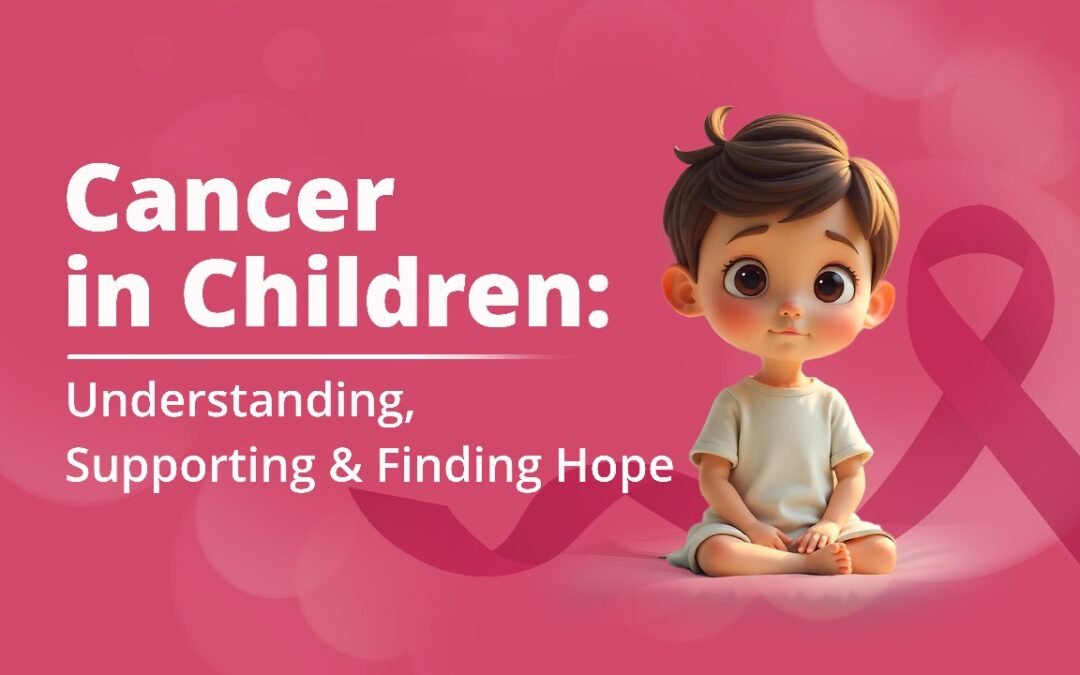Cancer.
The word itself evokes fear and uncertainty. But when it strikes a child, the weight of that fear can be unimaginable. Childhood cancer, though less common than adult cancers, is a very real threat, affecting an estimated 400,000 children globally each year [WHO].
This blog aims to shed light on this topic, providing information, dispelling myths, and offering resources for parents, families, and anyone touched by childhood cancer.
Understanding Childhood Cancers
Unlike adult cancers, which are often linked to lifestyle choices, the exact causes of childhood cancers remain largely unknown. Genetic predispositions might play a role in some cases, but most are considered sporadic.The good news is that significant progress has been made in childhood cancer treatment. In high-income countries, with access to advanced medical care, the cure rate for many childhood cancers exceeds 80% [WHO]. Early diagnosis is crucial, and being aware of common warning signs can make a big difference.
Common Cancers in Children
Here’s a look at some of the most frequently diagnosed childhood cancers:
Leukemia: This blood cancer affects the bone marrow, impacting the production of healthy blood cells.
Brain and Spinal Cord Tumors: These tumors can cause headaches, nausea, and vision problems.
Neuroblastoma: This cancer arises from immature nerve cells and can develop in various parts of the body.
Wilms Tumor: This kidney cancer is often diagnosed in early stages.
Lymphoma: This cancer affects the lymphatic system, which plays a vital role in immunity. There are two main types: Hodgkin lymphoma and non-Hodgkin lymphoma.
Rhabdomyosarcoma: This is a cancer of the soft tissues, such as muscles.
Retinoblastoma: This rare eye cancer can be detected through a white reflex in the pupil.
Bone Cancer: This includes osteosarcoma and Ewing sarcoma, which can cause pain and swelling in the affected bone.
Warning Signs of Childhood Cancer
While symptoms can vary depending on the type of cancer, some general warning signs in children should prompt a visit to the doctor:
Unexplained fever or fatigue
Persistent headaches, especially with nausea or vomiting
Excessive bruising or bleeding
Weight loss or poor appetite
Lumps or masses anywhere on the body
Changes in vision or hearing
Bone or joint pain
Persistent white spots in the pupil (for retinoblastoma)
Treatment Options
The specific treatment plan depends on the type and stage of cancer. Common approaches include:
Surgery: To remove the cancerous tumor or affected tissues.
Chemotherapy: Powerful drugs that target and destroy cancer cells.
Radiation Therapy: High-energy beams used to kill cancer cells or shrink tumors.
Stem Cell Transplants: In some cases, a bone marrow transplant might be necessary.
Supporting a Child with Cancer
A diagnosis of childhood cancer can be devastating for families. Here are some ways to offer support:
Be a listening ear: Provide a safe space for parents and children to express their emotions.
Offer practical help: Assist with errands, childcare, or meals.
Connect with support groups: Connecting with other families facing similar challenges can be invaluable.
Respect privacy: Be mindful of the family’s need for space and offer support in ways they feel comfortable with.
Childhood cancer research is ongoing, with advancements in targeted therapies and personalized medicine offering greater hope for the future. Organizations like the American Childhood Cancer Foundation [American Childhood Cancer Foundation] and St. Jude Children’s Research Hospital [St. Jude Children’s Research Hospital] are at the forefront of this fight.
Remember, early detection is key. By being aware of the signs and symptoms, parents can seek prompt medical evaluation if needed. There is also immense strength and resilience in children battling cancer. With the right support, advanced treatment options, and ongoing research, the future for children with cancer is brighter than ever.

